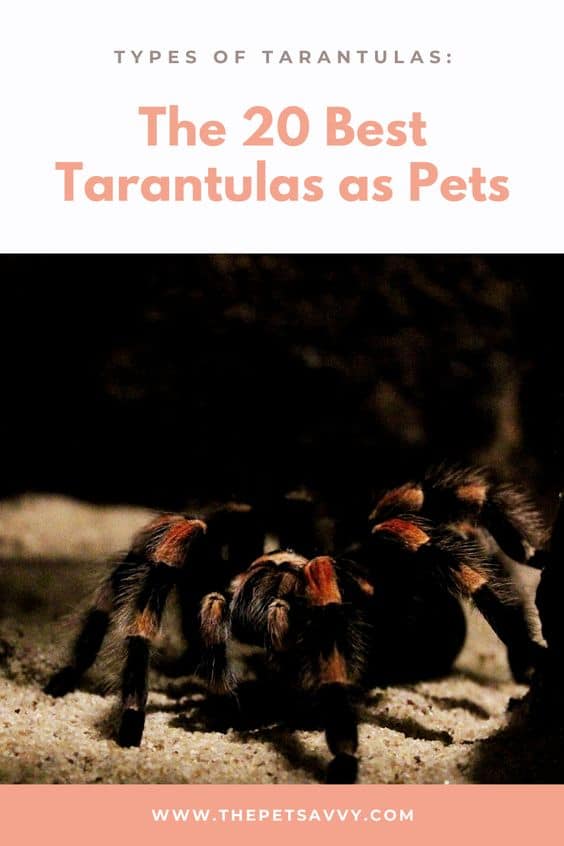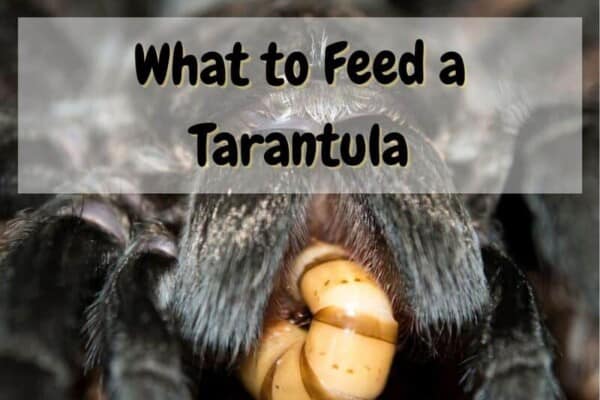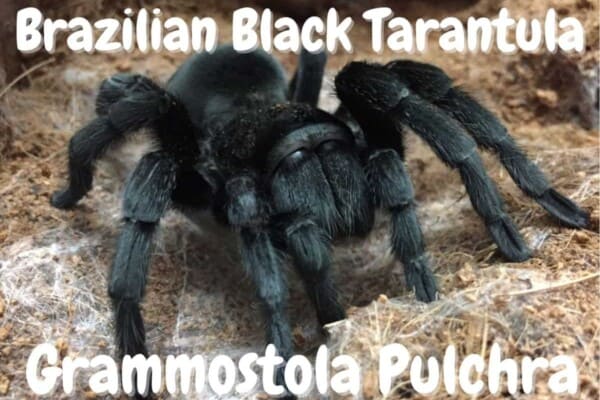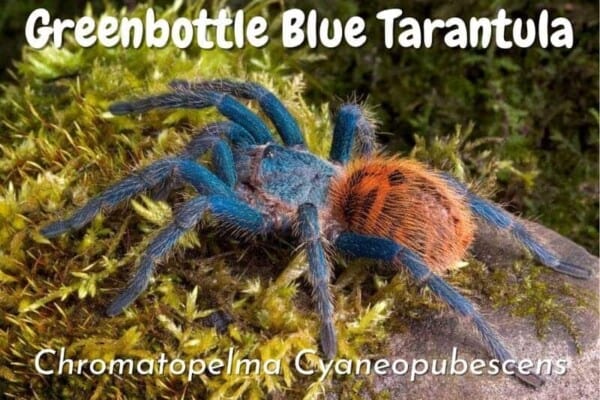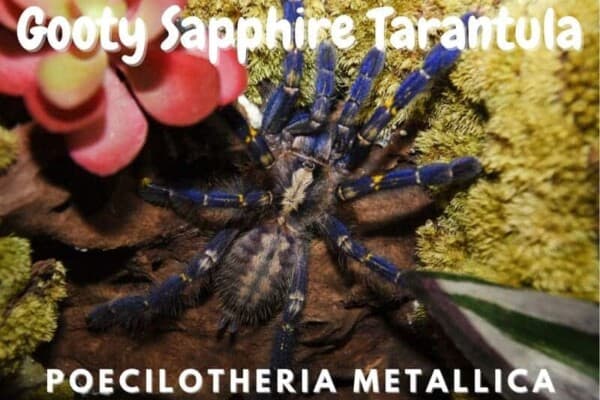By far one of the most common phobias around is Arachnophobia, or the fear of spiders, and for good reason too. There is something downright alien about these little arachnids that can make your skin crawl with ease.
But even though they are strange and eerie looking, there is also a cuteness factor to them which makes them worth checking out, and there is no cuter and simultaneously scarier spider out there than the tarantula.
This combination is exhilarating to many, as even though they are quite terrifying to look at, the more you take care of them and the closer your bond gets, the more you’ll love your little eight-legged friend.
Not only are tarantulas quite fascinating to look at, but they can also make for quite loveable pets if you take the time and effort to actually treat them right.
On top of that, tarantulas are nowhere near as scary as you may think they are. Looks aside, tarantulas are some of the most docile spiders you’ll ever find, and they are also quite intelligent so they will rarely if ever actually attack a human.
Instead, they prefer to live in burrows in the ground as they set down their webs as traps to get ahold of their prey.
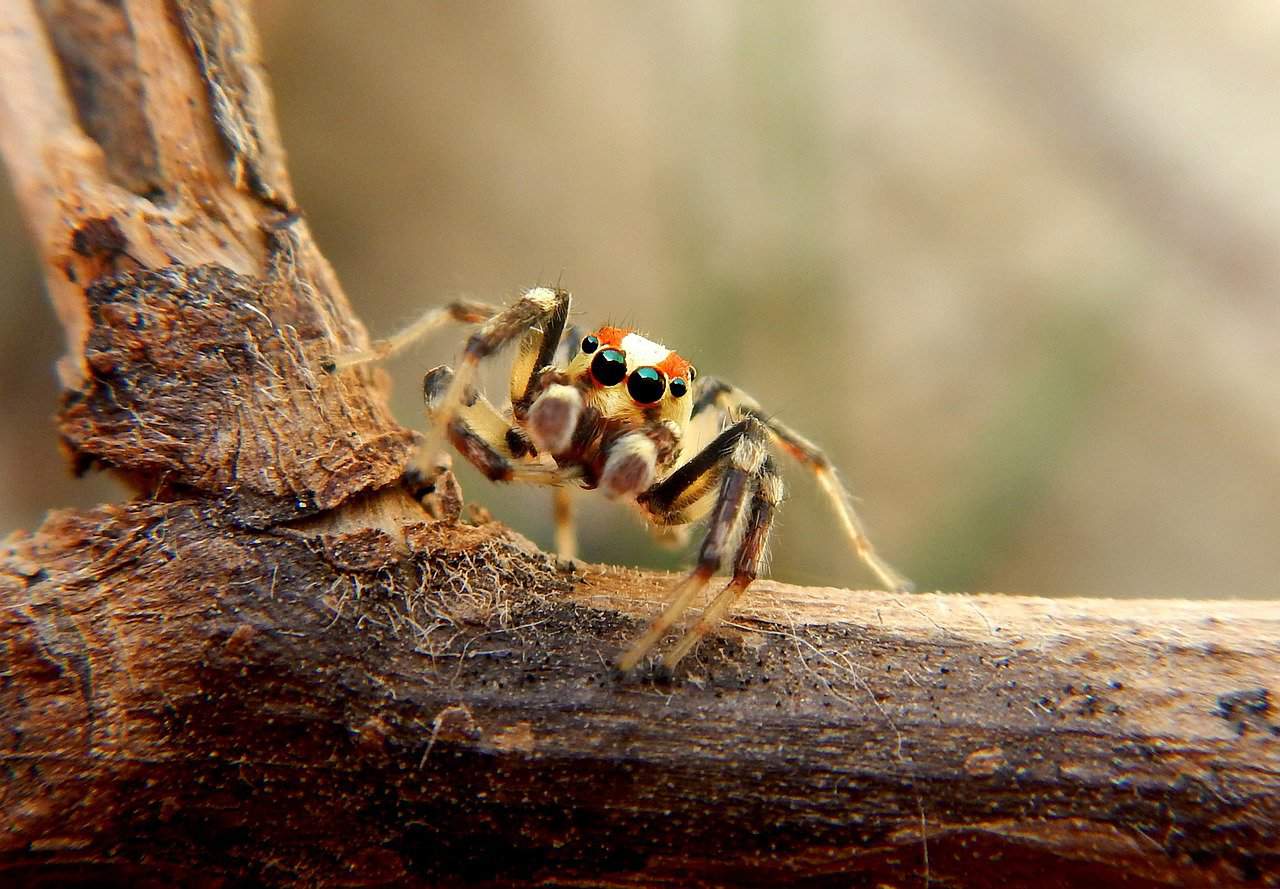
As such, you can expect tarantulas to be very easy to take care of, especially so since their food is so easy to come by, it is so affordable, and they don’t even take up a lot of space to live in.
But what many people don’t realize is the fact that there is no one singular tarantula species out there, quite the contrary actually.
While we do love to use the umbrella term “tarantula” whenever we see one, in actuality there are around 30 different species of tarantulas native to the US alone, with well over 800 of them worldwide.
The most distinguishable features of the tarantulas include the fact that they are quite large, hairy and they have leg-spans of almost 11 inches in total.
Their venom is also nowhere near as powerful as it is made out to be on TV, with it being largely harmless to humans, no stronger than a bee’s.
If you want to become a tarantula owner then chances are that you’re now searching through the best tarantula species for you.
If that sounds about right then you came to the right place as we’ve got a list of the top 20 best tarantulas you can keep as pets, starting off with:
20. Socotra Island Blue Baboon
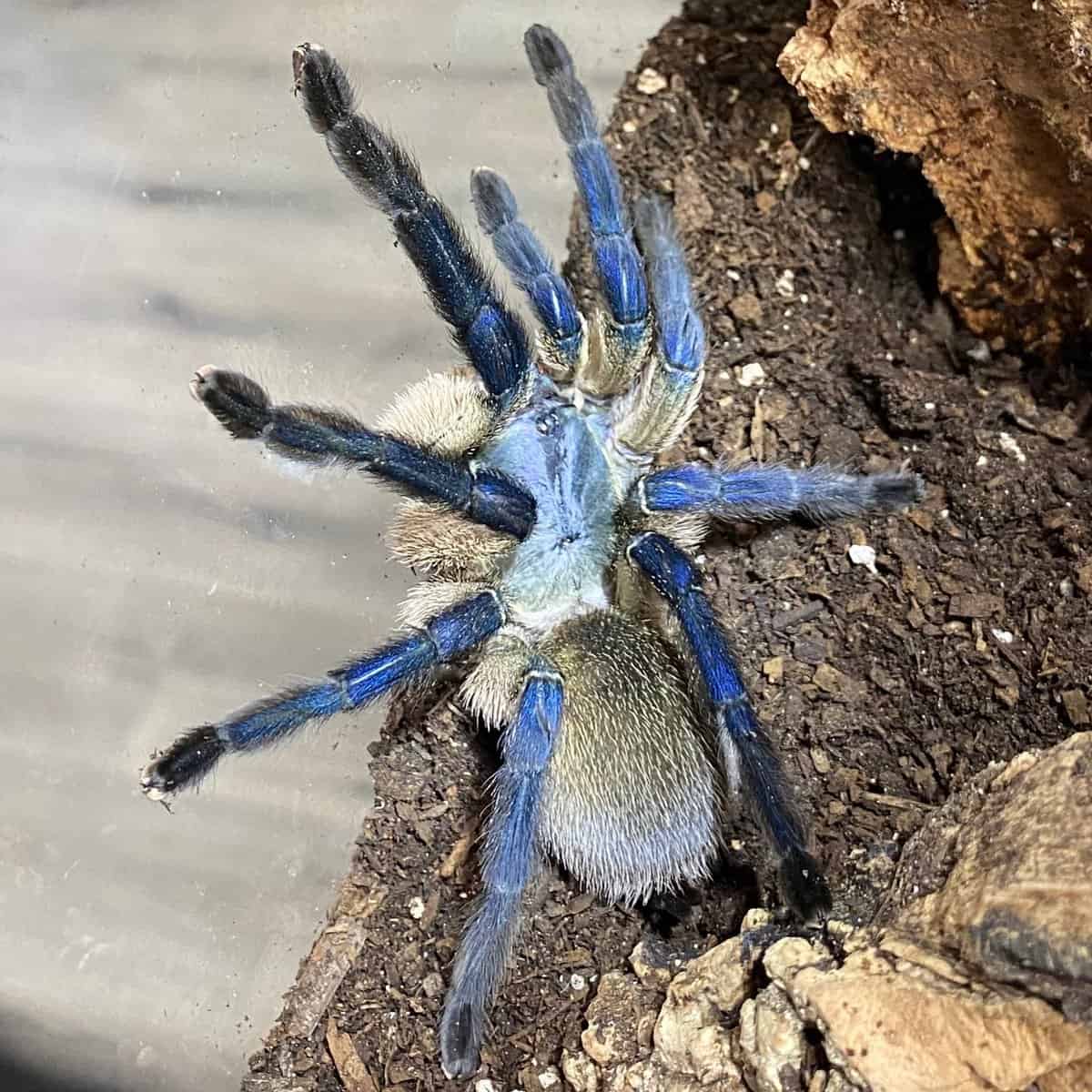
Also commonly referred to as the Socotra Blue Baboon Tarantula, this tarantula typically grows to be around 2.5 inches in total, and it is known for being a burrower.
As such, you’ll always find them shyly digging their way into the substrate, setting themselves up to make sure that they can catch their next meal with ease.
They are very docile and are known for making great pets for beginners, although at the same time they are quite speedy on their feet so you may want to stay away from this species if you are still a beginner and you’re not accustomed to their running speed.
19. Martinique Red Tree Spider
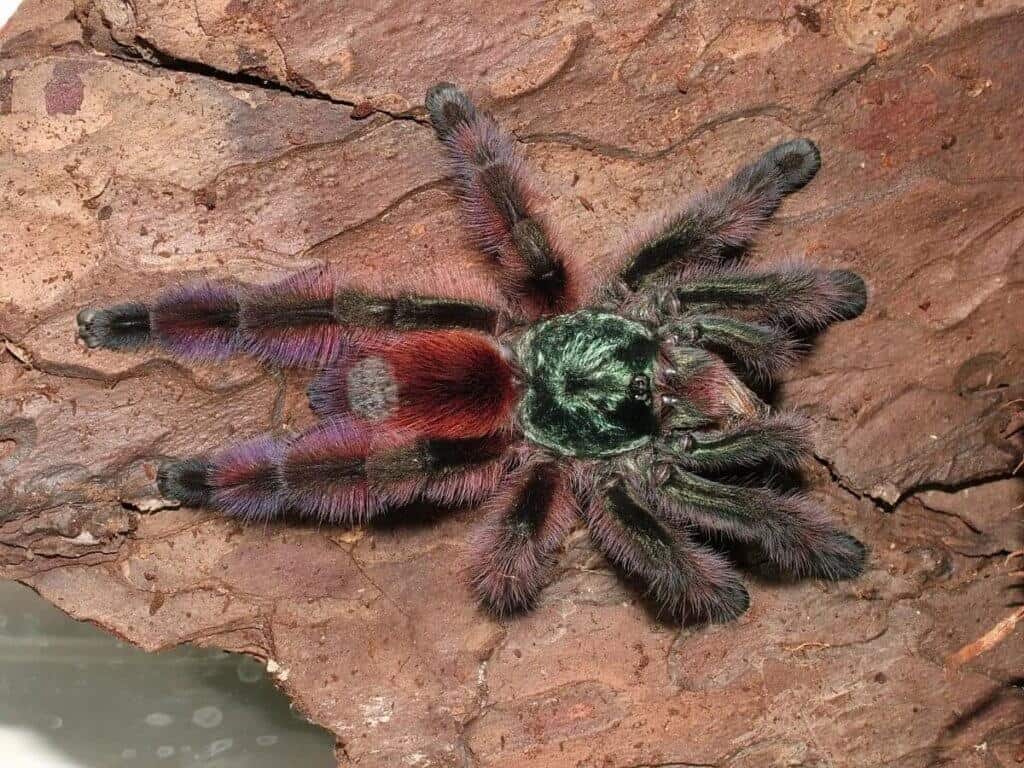
This absolutely beautiful tarantula species also goes by Martinique pinktoe, and it is by far one of the most stunning looking species of tarantula we’ve ever laid our eyes on.
They originally come from the Caribbean Sea, and they are known for their colorful palette and their overall docility.
When you first get them, chances are that your tarantula will be blue, but as it grows its color palette tends to change, eventually becoming fully red with a green carapace.
Interestingly enough, this isn’t a burrower type of a tarantula, instead being a tree-dweller that creates incredibly complex funnel-type webs in order to catch their prey.
18. Pink Zebra Beauty
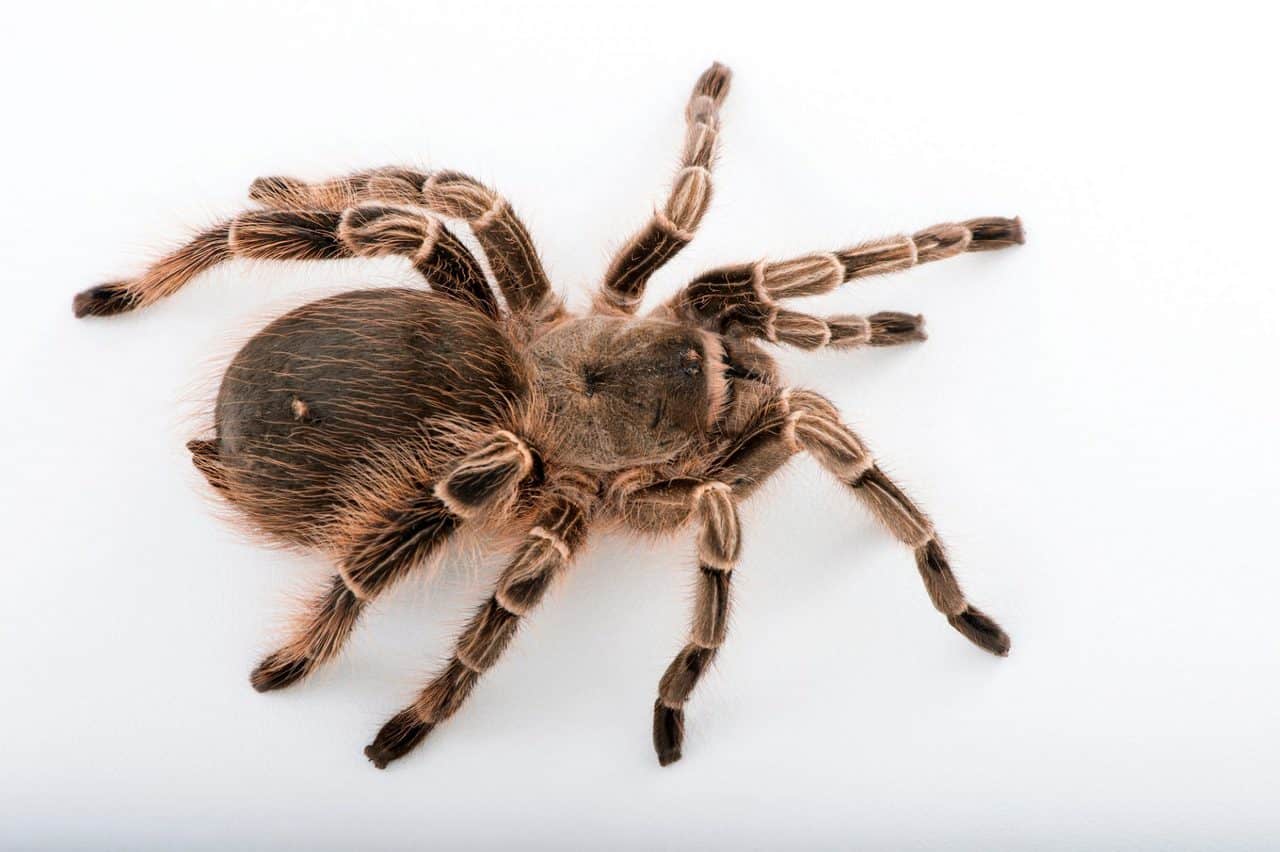
Although the species does originate from South America, it is a Brazil and Paraguay native. This in itself makes it readily available for purchase, and when coupled with its overall docile factor, it’s no wonder that it is one of the most popular options around.
You can quickly tell if you’re dealing with a Pink Zebra Beauty simply based on the fact that it has a clearly brown body with yellow markings.
17. Common Pink Toe
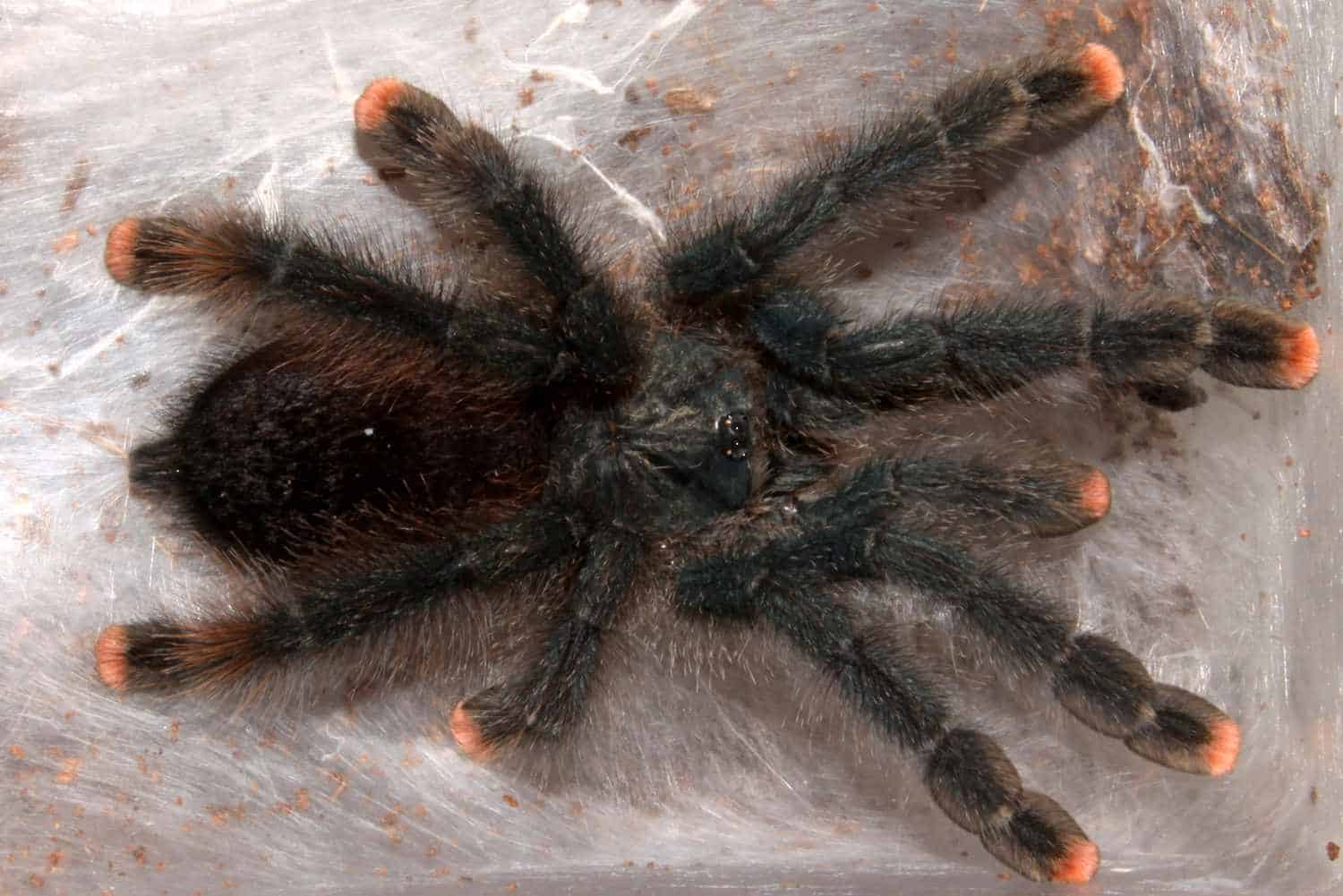
Also commonly referred to as the South American pink toe, this is yet another tree-dwelling tarantula species that is known for how easy it is to take care of and for how docile it can be.
The only reason as to why this species isn’t any higher up on our list is because it does tend to leap or run away, in case it does feel threatened.
While they do make for great pets, they are not recommended for first-time users, simply because of the fact that they have a short lifespan of 6 to 9 years in total.
16. Brazilian Salmon Pink Bird-Eating Tarantula
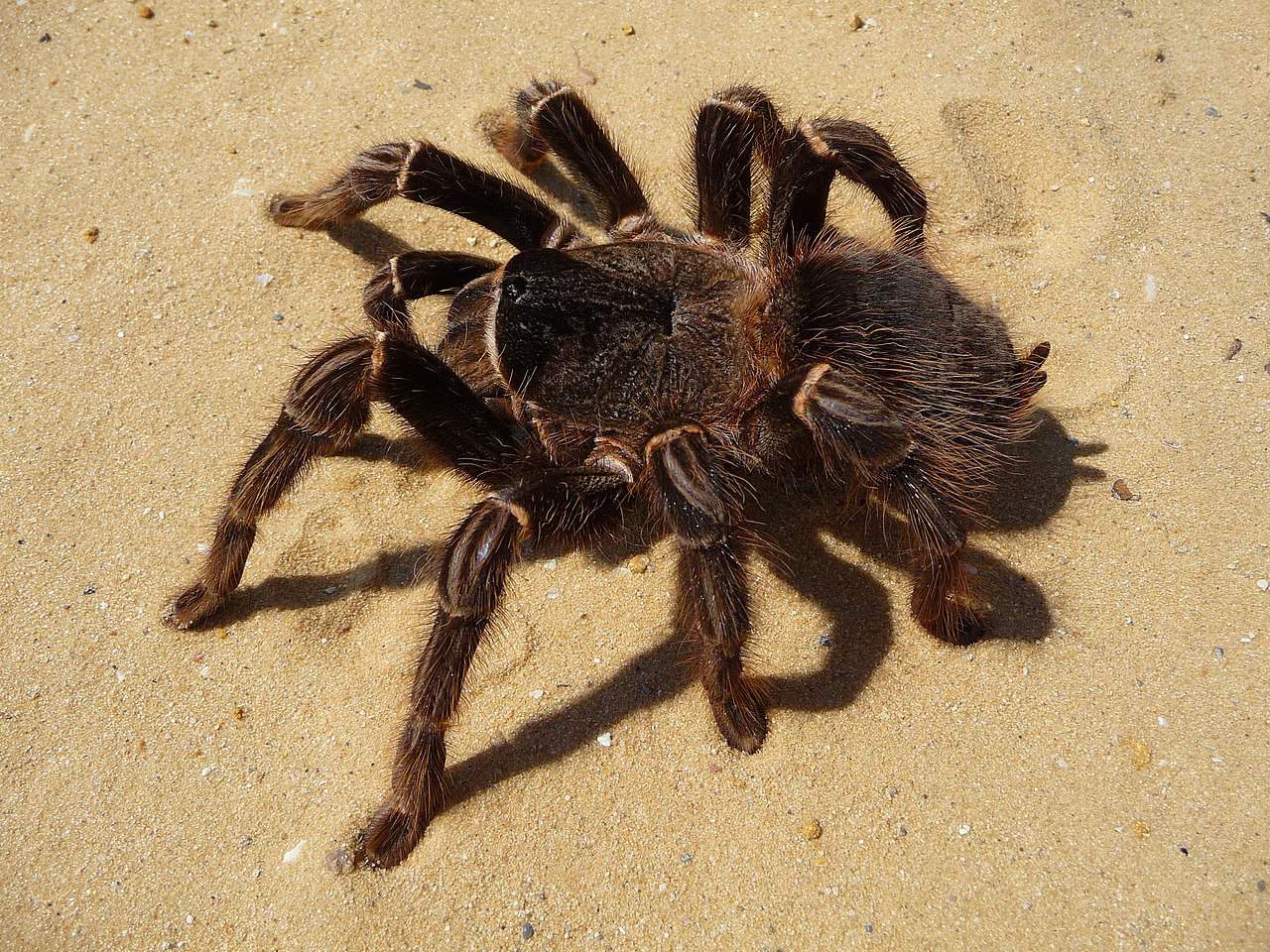
This species was actually discovered way back in 1917, and it is known for being one of the largest tarantulas in the world right now.
As the name implies, it is native to Brazil, and it is one of the friendliest and most obedient tarantula species you’ll ever find.
On top of that, they live most of their lives above ground, which makes them very easy to admire and take pictures of.
Do beware however that handling them isn’t recommended if you are a new tarantula owner, because the hairs are known to irritate the skin with ease.
15. Mexican Redleg Tarantula
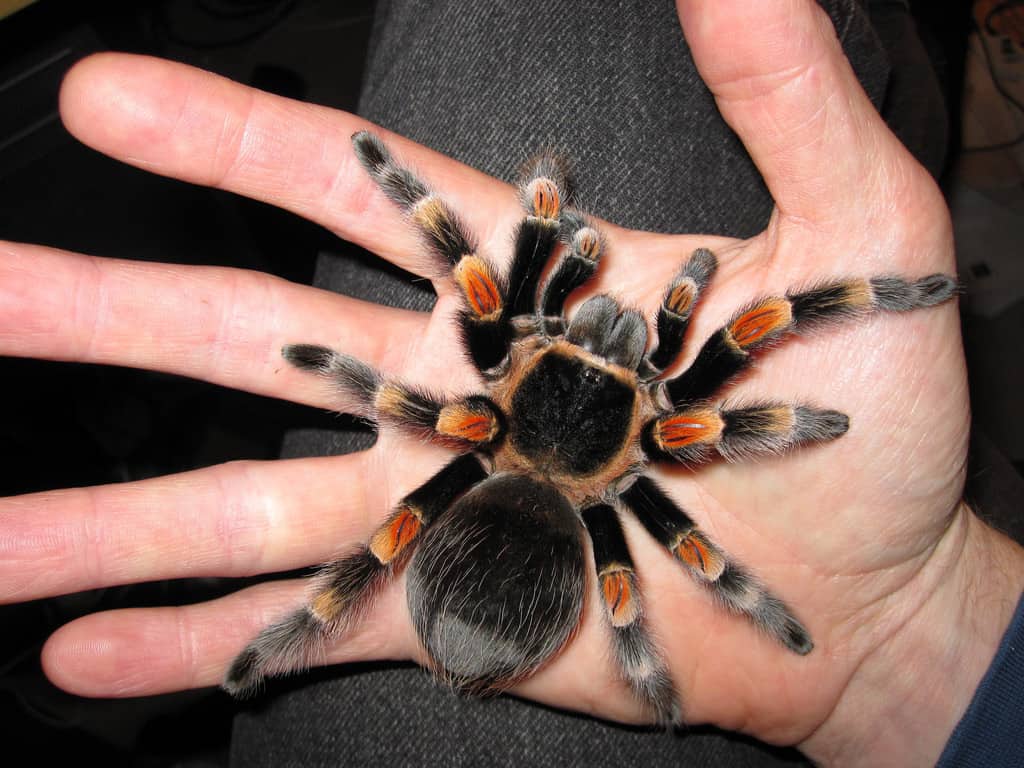
The Mexican Redleg Tarantula is a really popular choice for both beginner and experienced arachnid fans. They mature a lot slower than most other species out there, with the females surviving for as long as 30 years in total.
They are fairly easy to take care of, they are very well-behaved and are considered to be some of the best tarantulas you could get your hand on.
The only reason as to why they’re not higher up on this list is that they are considered to be a threatened species, so finding one will be quite a hassle.
14. Mexican Red Knee Tarantula
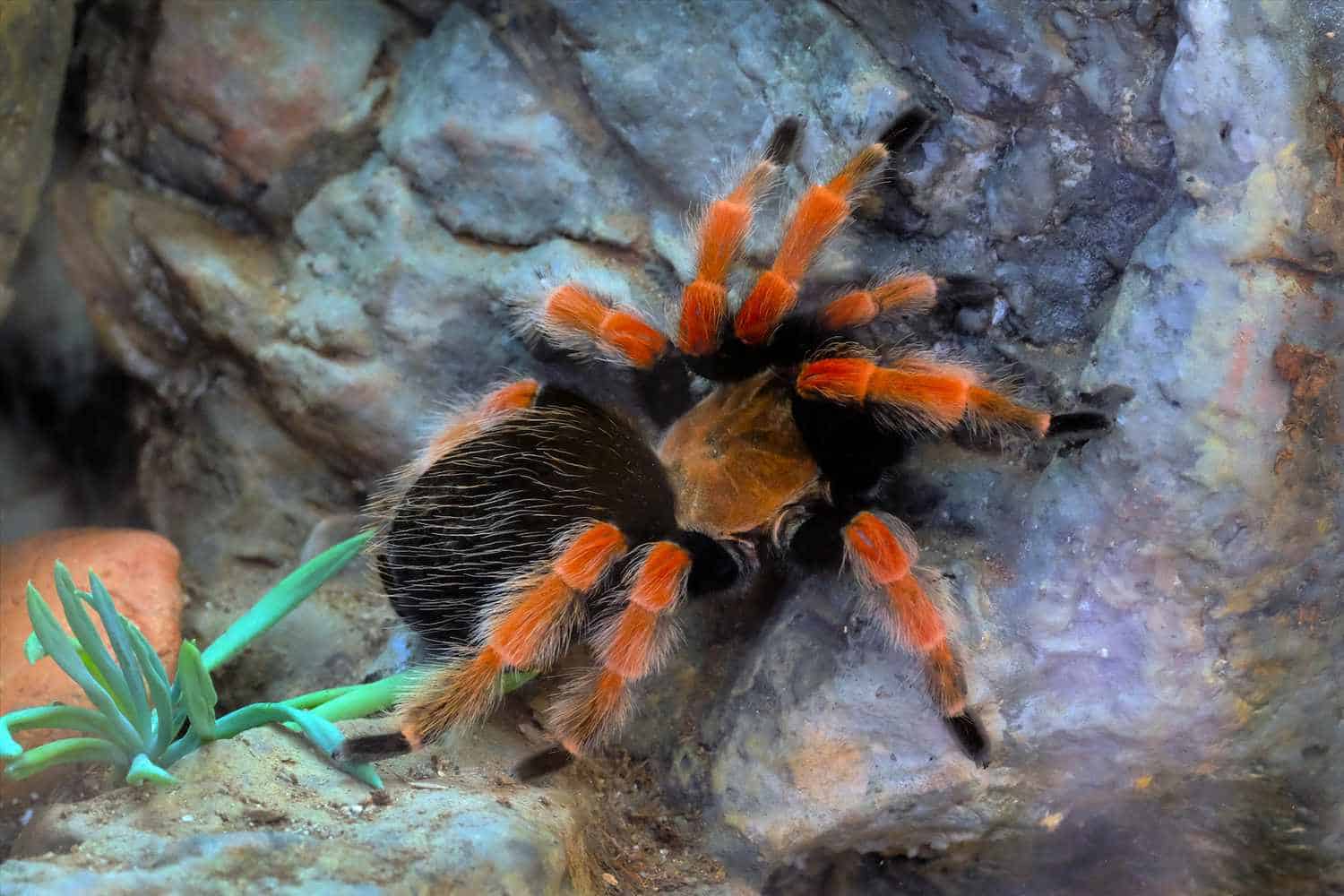
Next up on our list we have the Mexican Red Knee Tarantula, which, as the name implies, is known for its red legs and the black tips that give it a very beautiful and unique look.
It is by far one of the calmest tarantulas in the world and as such it makes for one of the best picks for beginners out there.
On top of all of that, Mexican Red Knee Tarantula females can also live up to be around 20 to 30 years old, which makes them amazing companions for a very long time.
13. Western Desert Tarantula
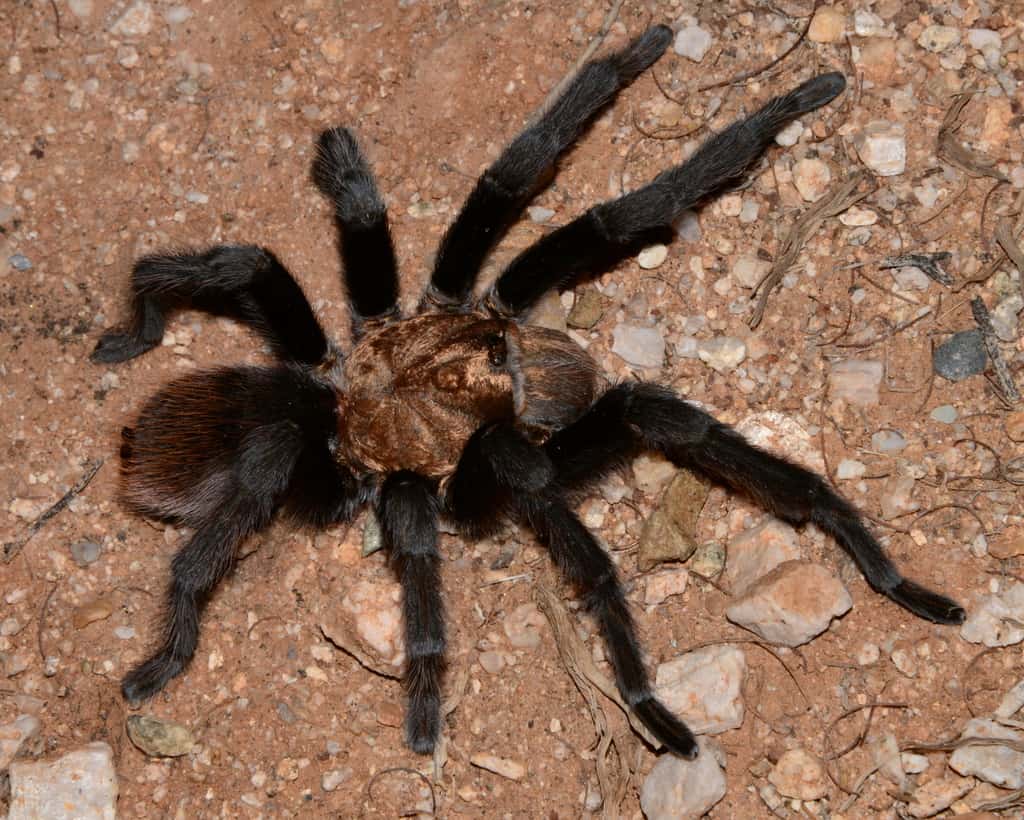
Also commonly referred to as the Mexican Blond, this species of tarantula is known for its bright coloring as you can see from the picture here.
The reason for that is because it lives in deserts and arid places, so being brightly colored is sure to help camouflage it better.
It is native to Arizona and some parts of Mexico, and it is a heavily recommended option for beginner tarantula owners, because females can live up to be 30 years old and they quickly get attached to their owners.
12. Mysore Ornamental
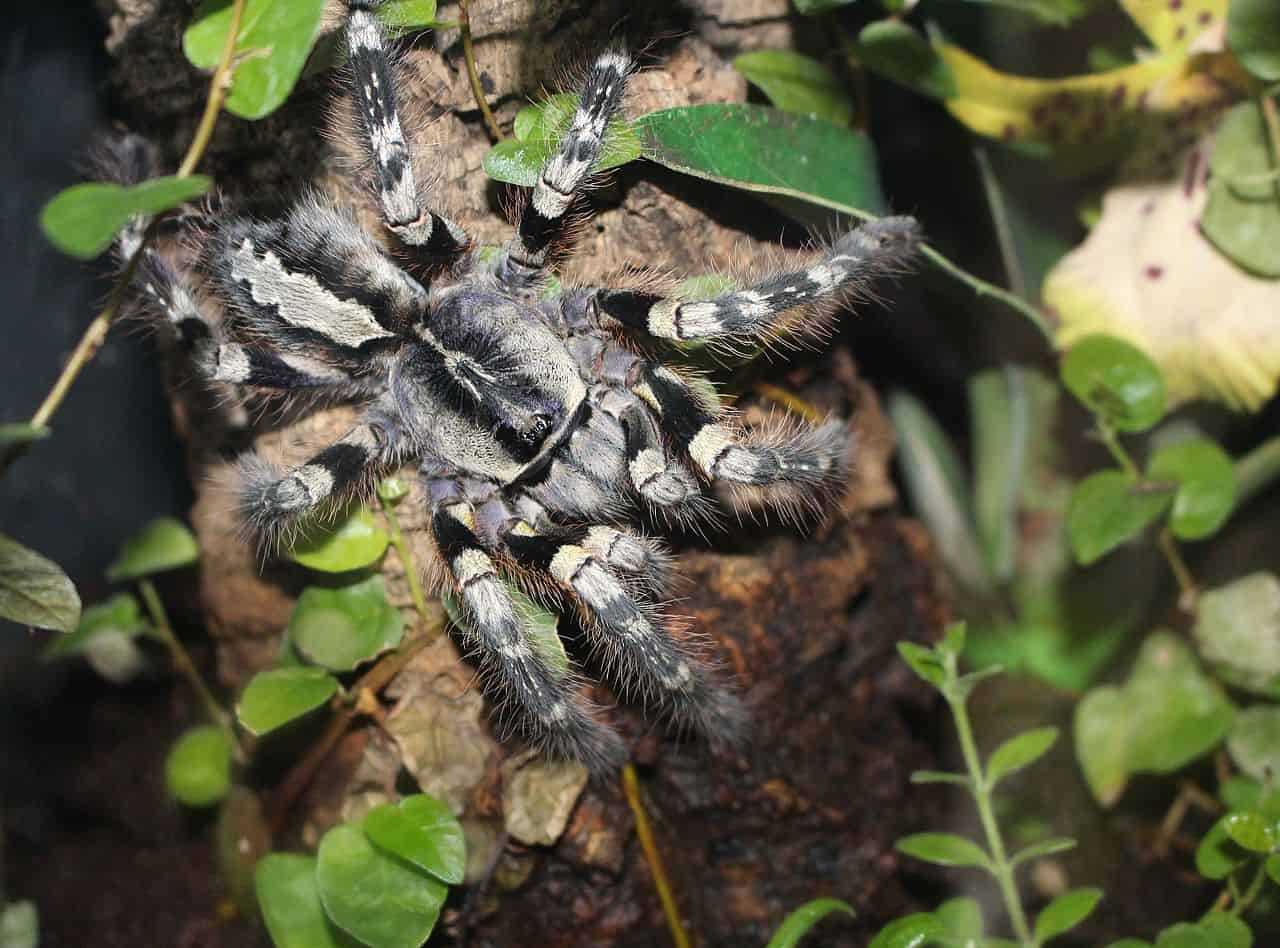
These tarantulas originated from South Africa, but thanks to their stunning looks and their overall docility they quickly caught on, being shipped all around the globe to the point where it is quite common to find Mysore Ornamental owners around your neighborhood.
These spiders can live up to be around 15 years old (for the females) and 5 years (for the males), which means that even though you will have them for quite some time, they’re nowhere near as “life-long” of an investment as some other tarantula species on this list.
11. Guatemalan Tiger Rump
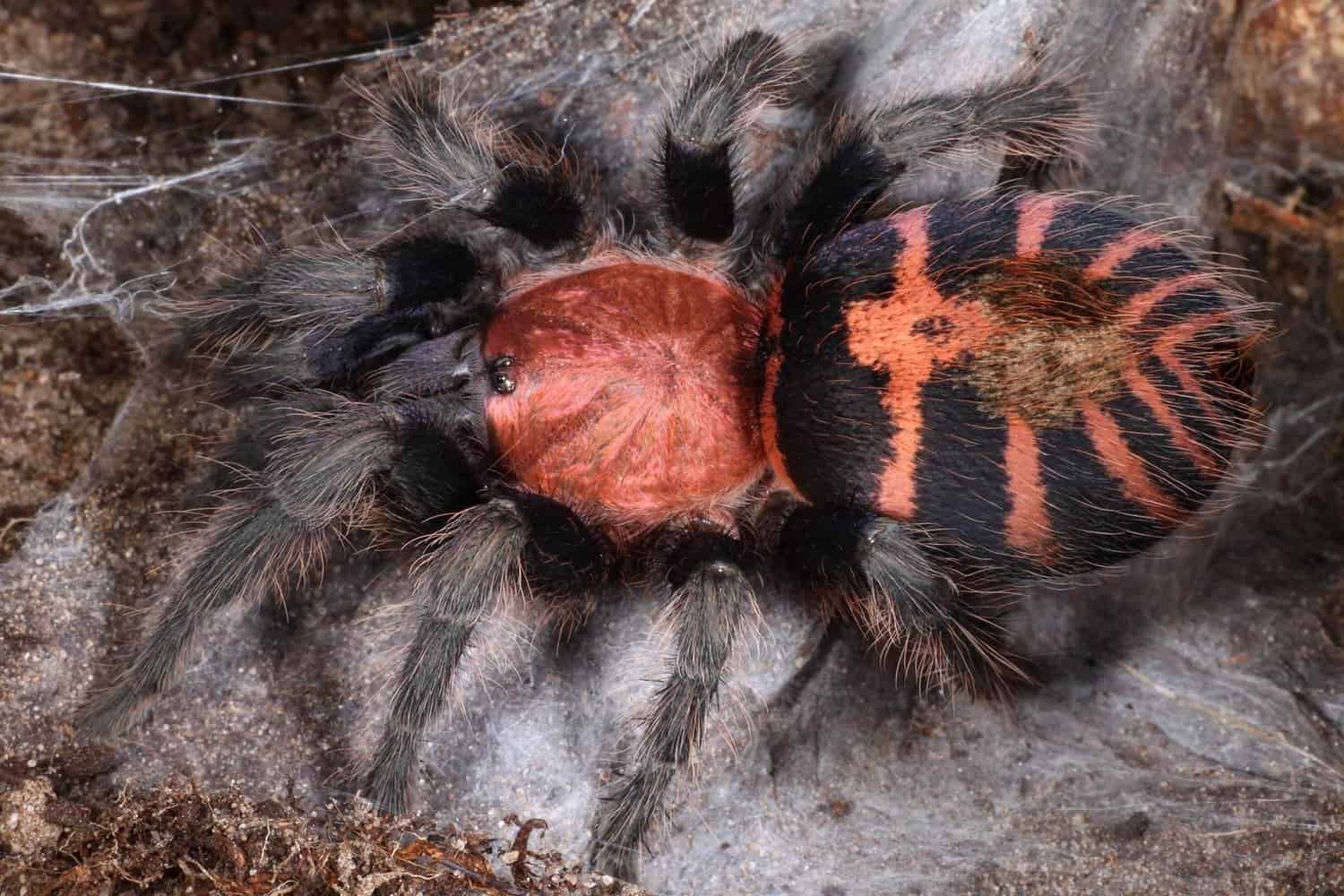
If you want to own a tarantula that will beautifully stare down anyone that enters your room, there’s no better option than the Guatemalan Tiger Rump.
It is an absolutely gorgeous looking arachnid that also makes for one of the best options for beginners thanks to the fact that they are not venomous in the slightest.
The only real downsides to owning a Guatemalan Tiger Rump are the fact that they have urticating hairs that they can shoot at you if threatened and the fact that they live short lives.
The males for example only live up to be 2 to 4 years old while the females can usually live up to be 11 years old.
10. Honduran Curly Hair Tarantula
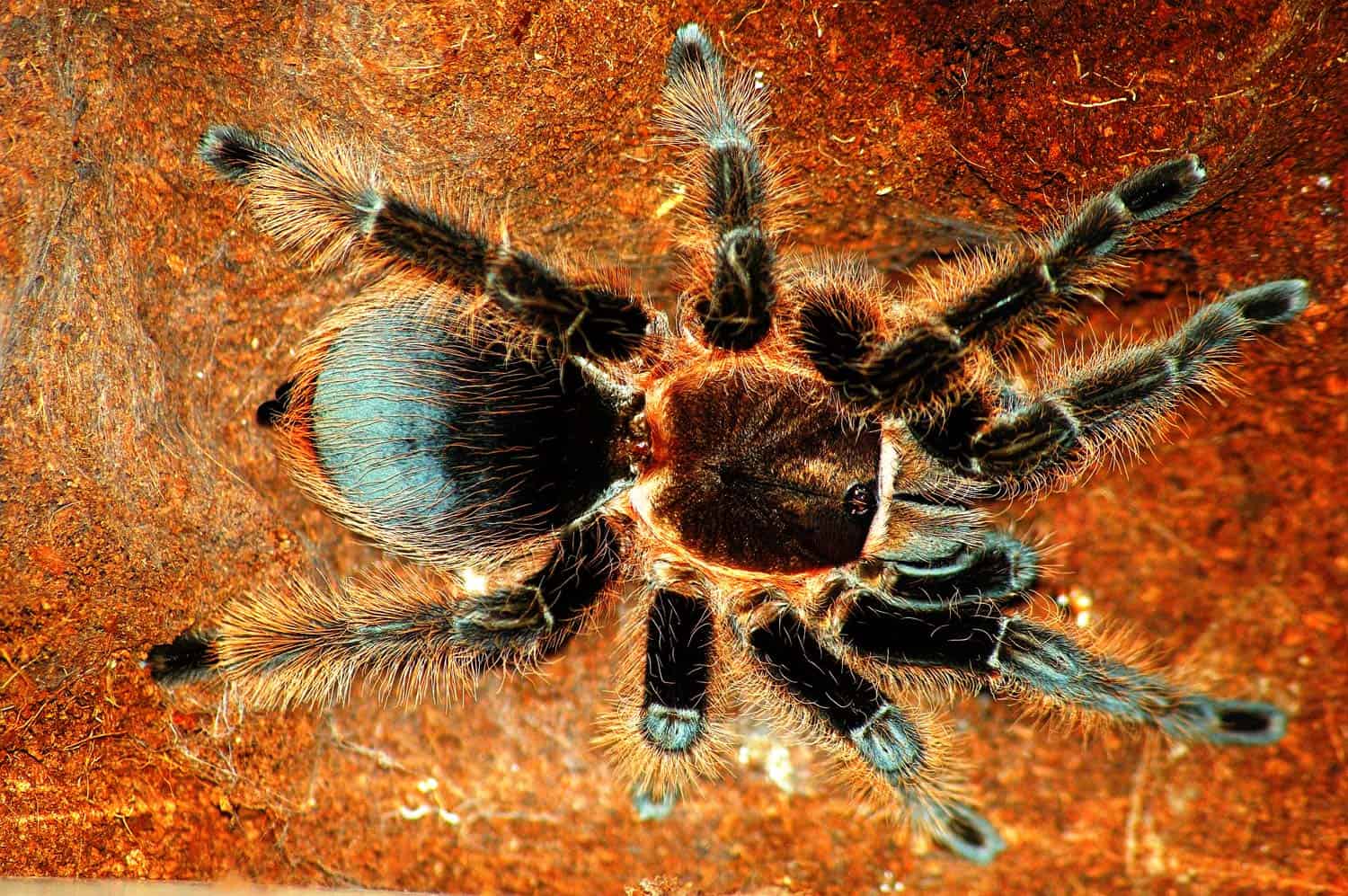
As you can probably tell based on its name alone, the Honduran Curly Hair Tarantula is known for its round body, which comes with long bristles that curl slightly.
These hairs are usually brown and black, but you can find the occasional golden hairs too if you’re lucky.
They are known for being great pets due to how calm and friendly they are, but do keep in mind the fact that they are also easily frightened and as such they are not that great for beginners.
9. Greenbottle Blue Tarantula
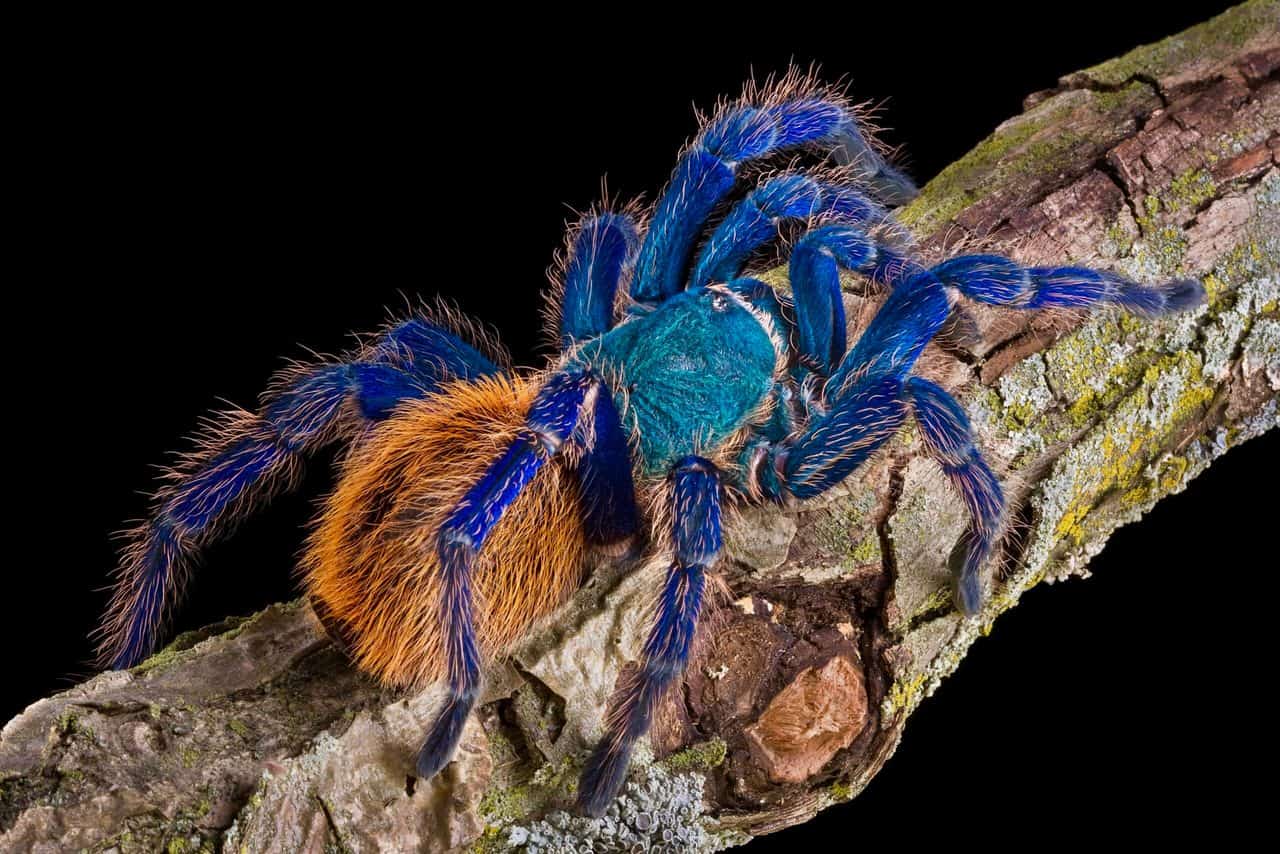
This is by far one of the most beautiful ornamental tarantula species you could invest into, and if you doubt us on that just look at how stunning these spiders are.
On top of that Greenbottle Blue Tarantulas also have a wide range of meals you can prep up for them, including crickets, roaches and worms which makes them very easy to take care of.
They tend to live in webbed burrows underneath bushes, tree roots and rocks, and they are known for avoiding confrontation at all costs.
8. Desert Blonde Tarantula
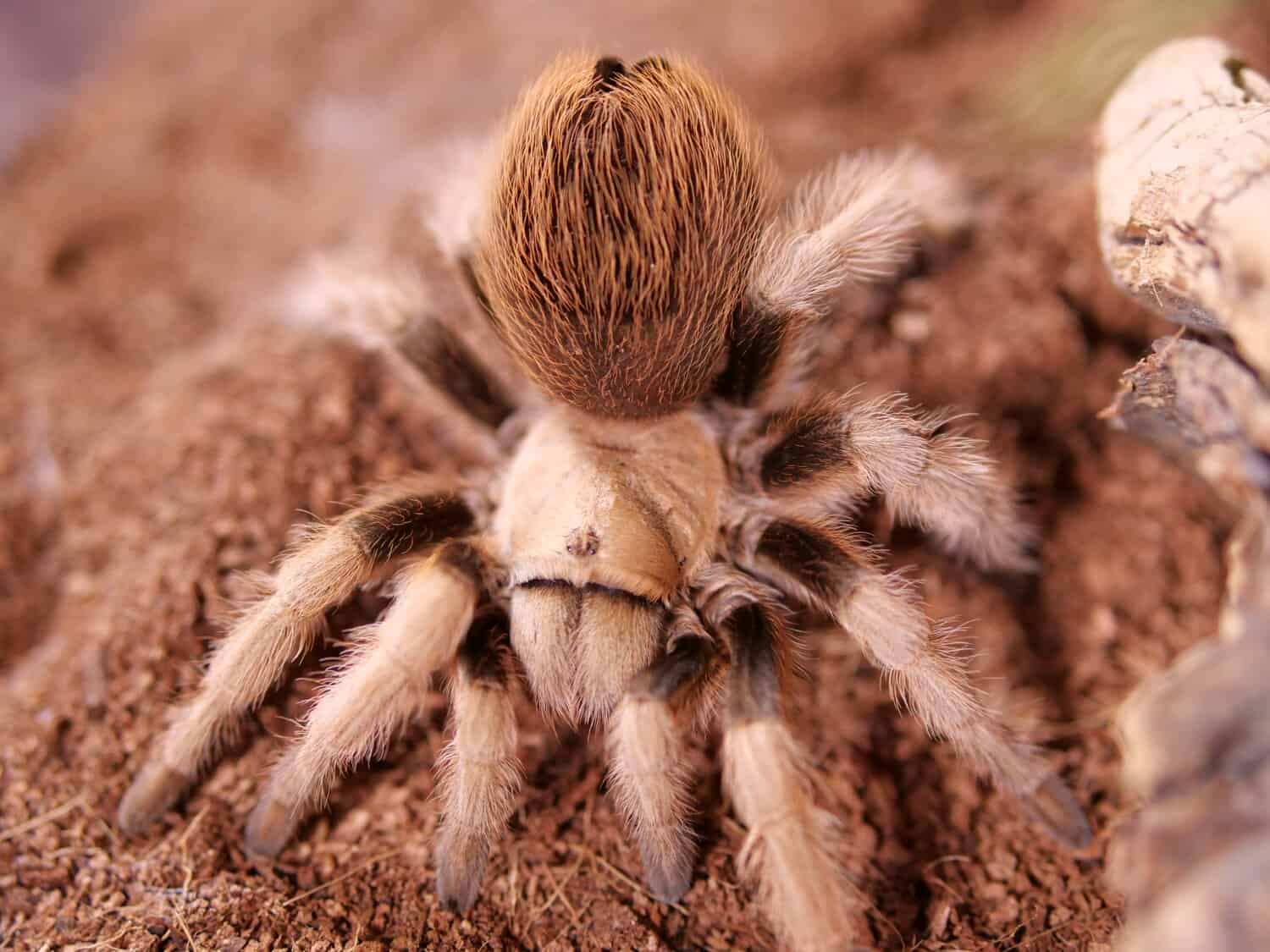
We do have a bit of a warning for this tarantula though, as it is one of the more aggressive species of tarantulas out there.
But, if you can excuse a few bites every now and then, you will surely learn to love your little blonde friend for as long as 30 years, if you go for a female and 5 to 10 years if you go for a male.
Luckily, their venom is mild for the most part, although a lot of people have stated that they are allergic to it so keep that in mind too.
7. Brazilian Black Tarantula
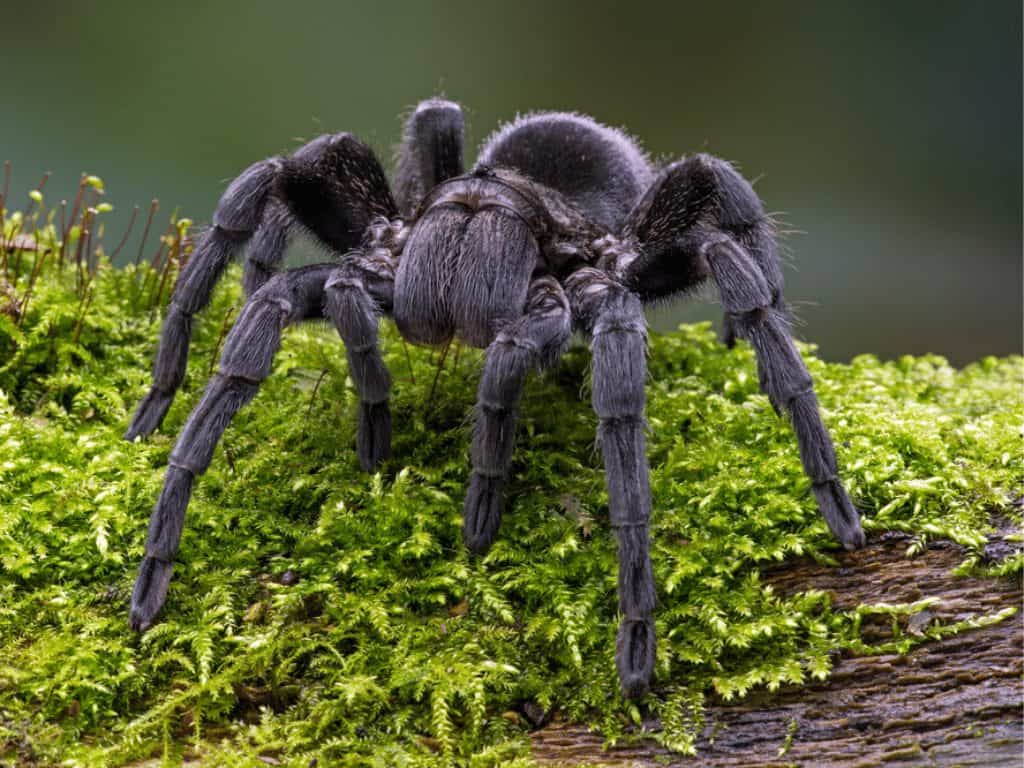
The Brazilian Black makes for one of the most beautiful and frightening tarantulas you could own, especially so thanks to its menacing color and its wide leg span.
The females here can live as long as 20 years in total while the males tend to drop dead at around the 5-year mark or so.
Feeding the Brazilian Black will not be all that difficult, as for the most part you will need to feed it around half a dozen crickets per week which is very easily attainable. They usually prefer living in the 70-degree range, with a humidity of around 60 percent or so.
6. Costa Rican Zebra
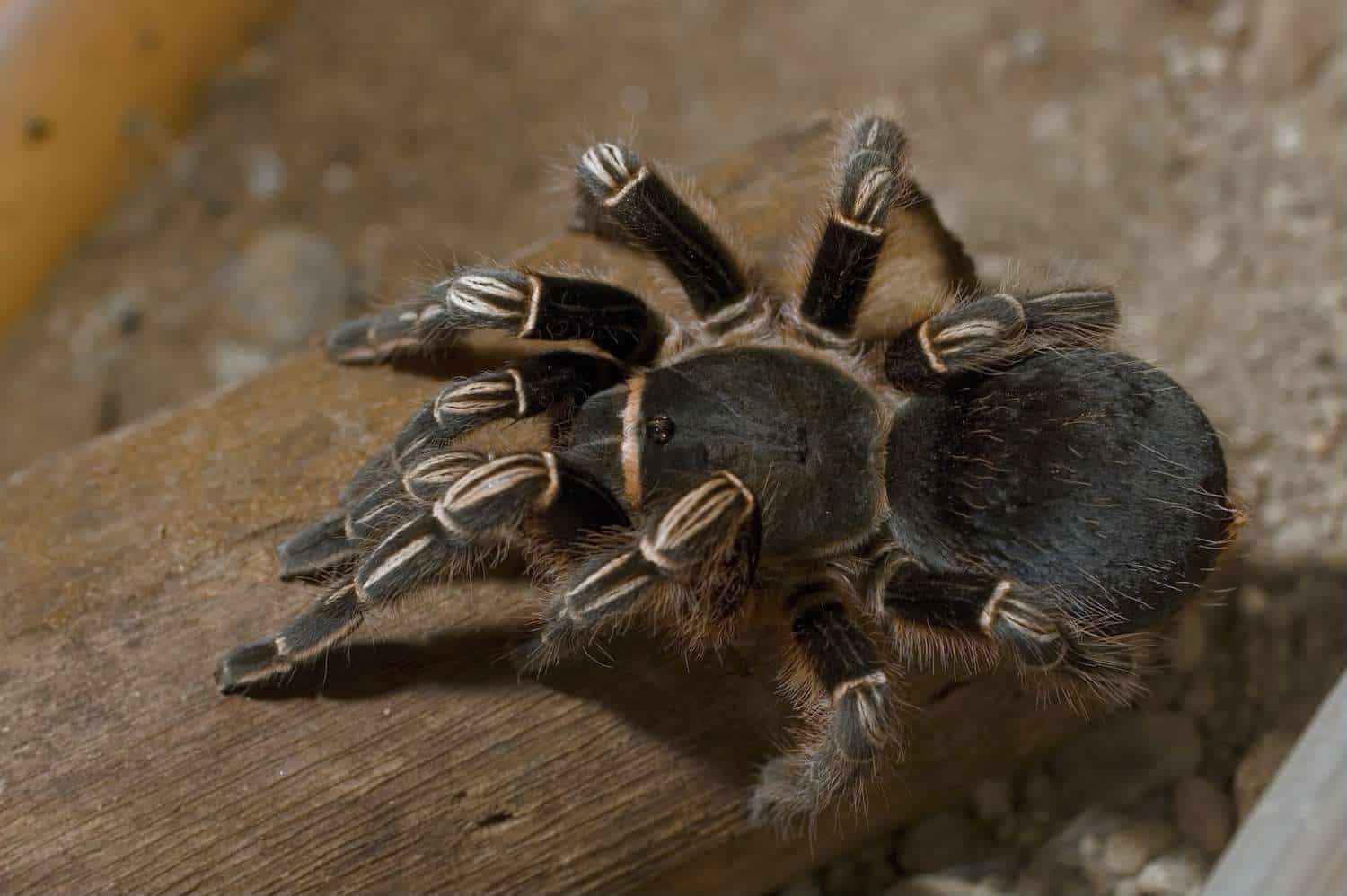
If you’re primarily looking for a calm and friendly eight-legged companion, you may want to look into getting yourself a Costa Rican Zebra, because these are some of the best tarantulas you could invest into.
Their only real downside is their speed, as they can easily traverse long distances if they ever feel threatened in the slightest.
As such, if you are a beginner this isn’t the best option for you, but if you do have a few years of experience under your belt you’ll be happy to hear that the Costa Rican Zebra female can live up to be around 20 years old while the males tend to drop dead at the 5-year mark.
5. Mexican Red Rump
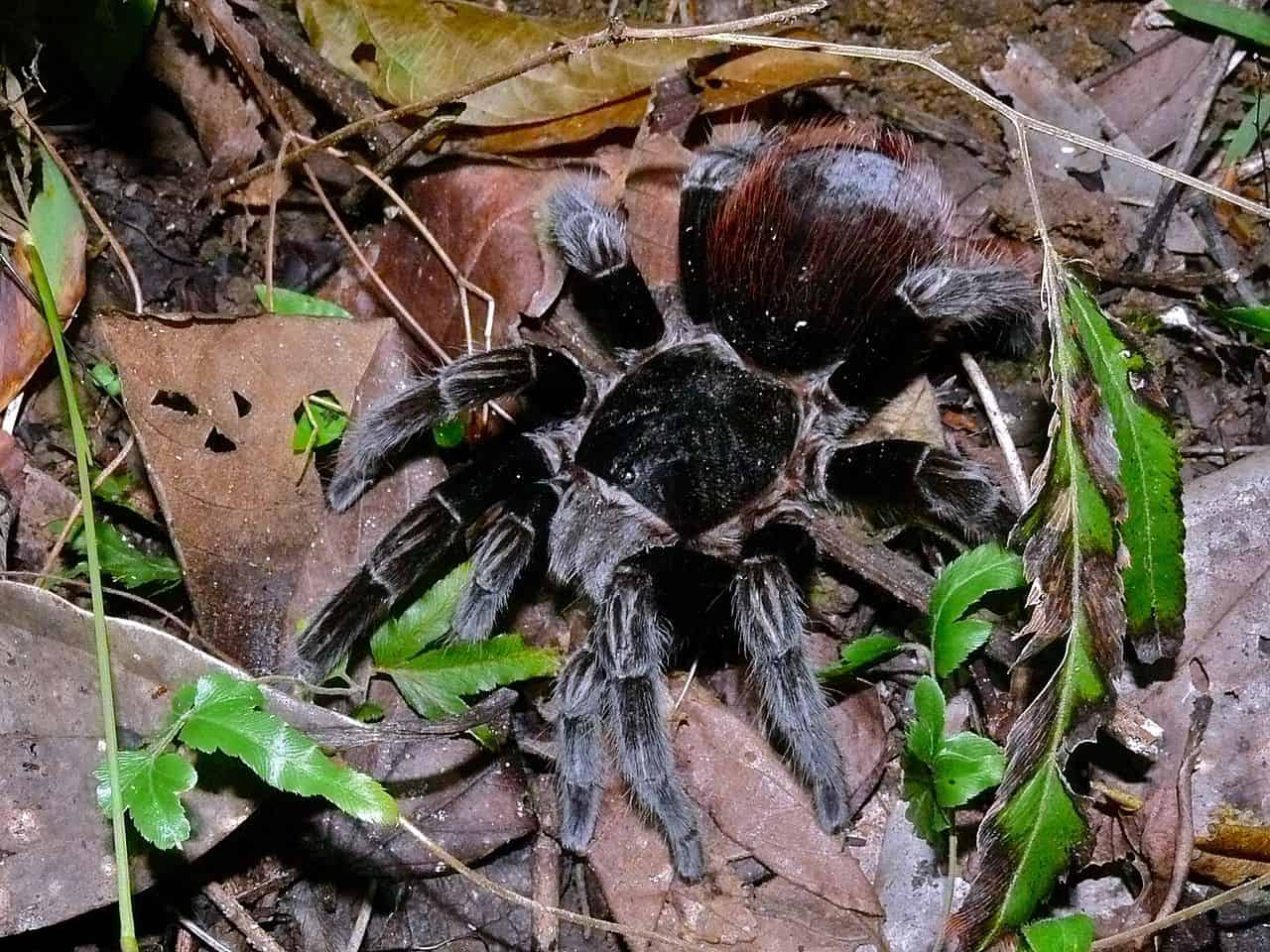
Despite the fact that it is a vulnerable species that is considered to be one step away from extinction in the wild, it is still one of the most popular pet options out there.
This is because of its long life span, as the female here can live up to be around 15 years old or so and during this lifetime, they tend to get attached to their owners quite easily.
Feeding the Mexican Red Rump is also quite easy, although if you do end up hurting it or scaring it, it will release urticating hairs.
4. Rose Hair Tarantula
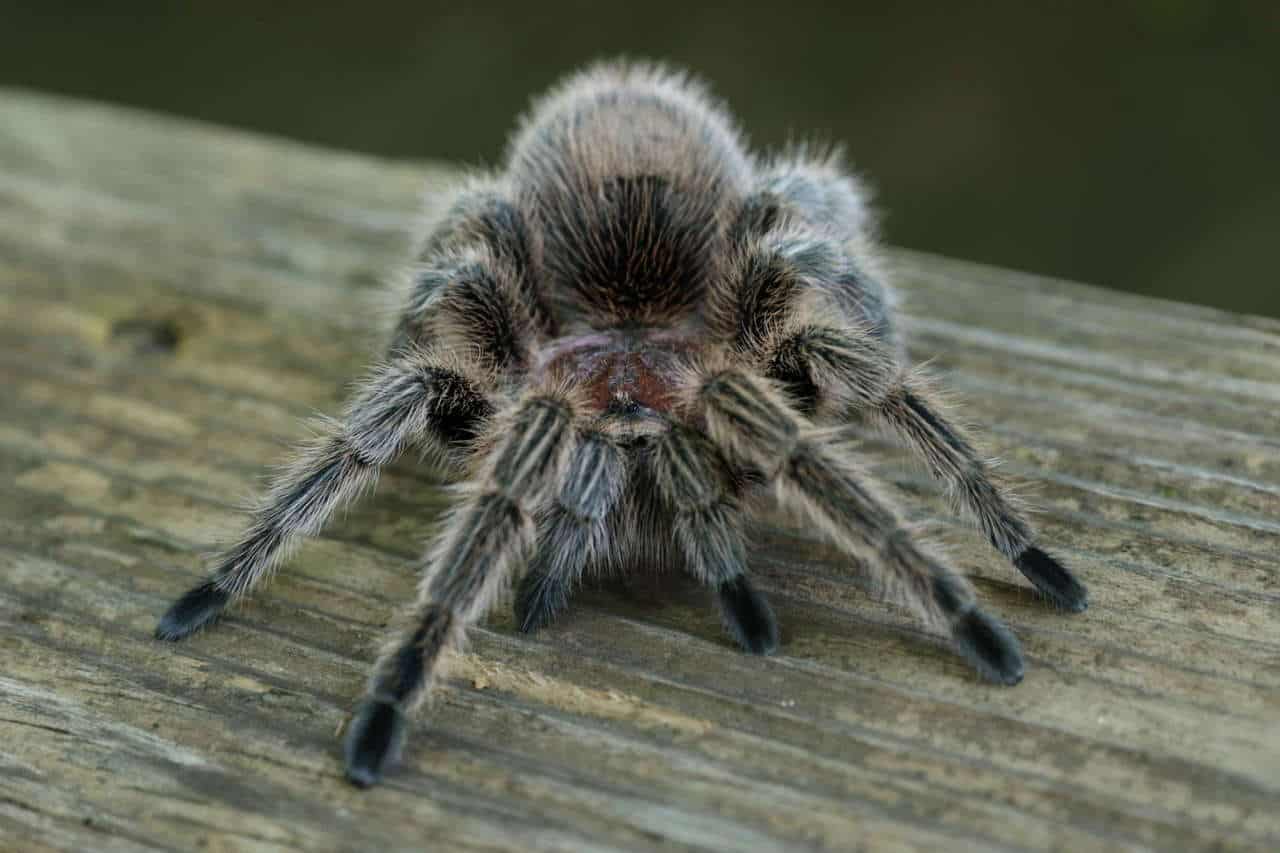
Also commonly referred to as the Chilean Fire Tarantula, this tarantula species is known for being one of the most affordable and beautiful breeds on the market right now.
They can live up to be around 20 years old too, and they are extremely docile, meaning that you will rarely if ever have to worry about them attacking you.
It will still throw its hairs up in the air to attack the owners every now and then if it feels threatened, but for the most part it will run away and hide even when you’re cleaning its tank.
Even though in the wild it prefers to live in burrows, under captivity it usually stays above ground, making for quite a beautiful addition to your room’s décor at any time.
3. Chaco Golden Knee
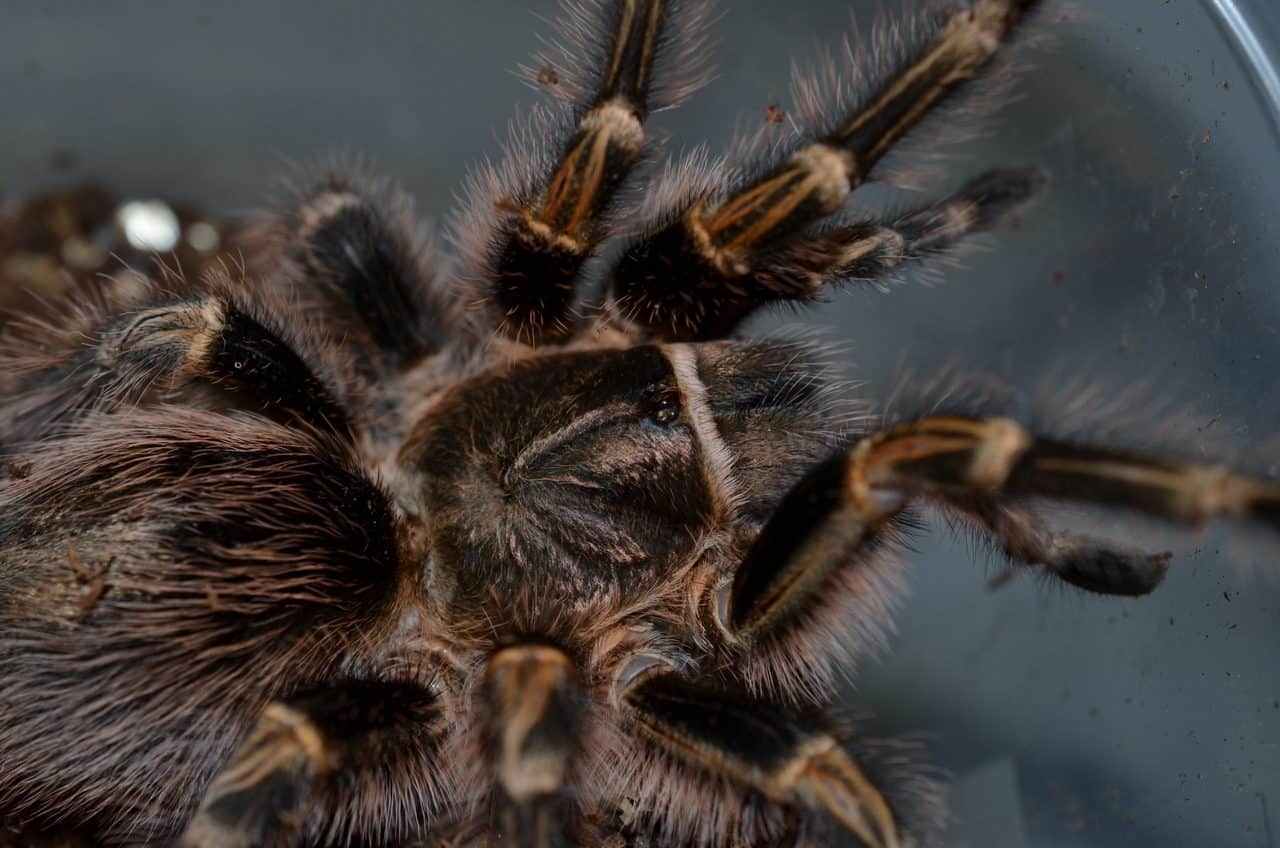
This right here is one of the largest tarantula species around, being able to reach sizes of up to 8 inches or more.
Still, its size is its only real threatening feature, as for the most part it is a very calm and shy little bugger that will very rarely attack for no reason, unless it is molting of course.
The molting process only lasts for a few weeks at a time though, which in itself is not too bad considering the fact that at any other time it will be a very calm and reserved pet.
The females also tend to live for longer than a few decades at a time, making this one of the longest living tarantula species around, although the males usually die around the 5-year mark.
2. Curlyhair Tarantula
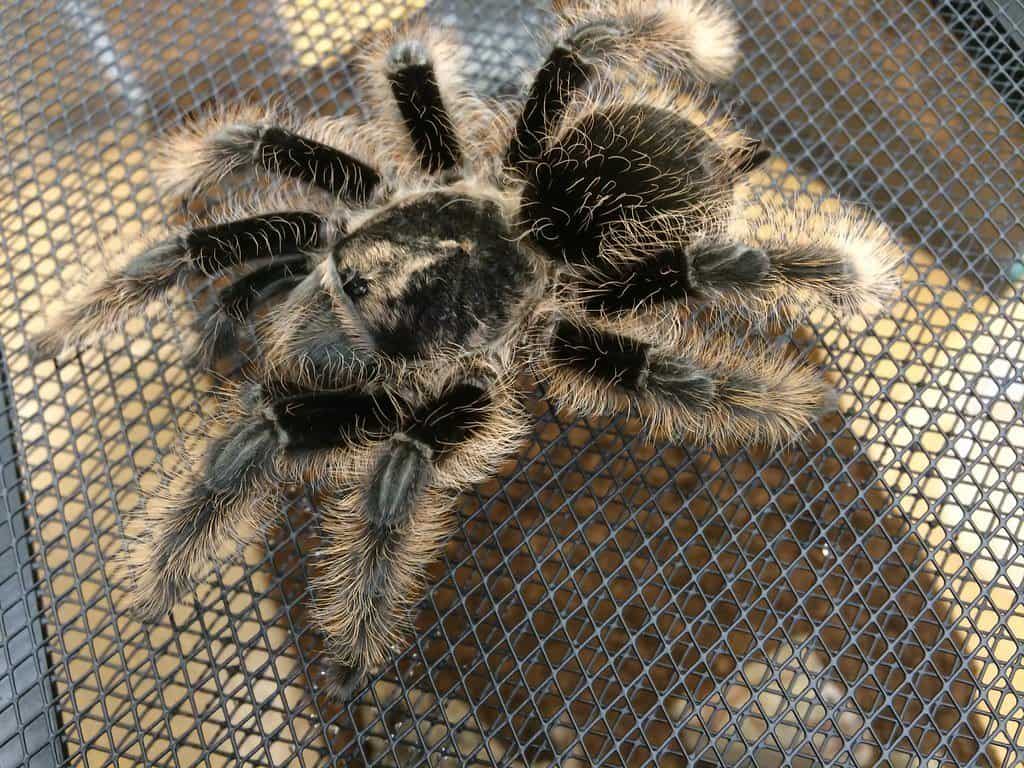
The Curlyhair Tarantula species is native to Nicaragua and Costa Rica, and it is known for its long lifespan and its overall docility.
The females here can live up to be around 20 years old or so, and the males usually rake up to 5 years too. Males are also known for having golden nuances while the females tend to be slightly grayer.
While the Curlyhair Tarantula can get quite aggressive when it molts and if mating is refused, for the most part you shouldn’t ever have to worry about it attacking you or anything like that.
1. Antilles Pink Toe Tarantula
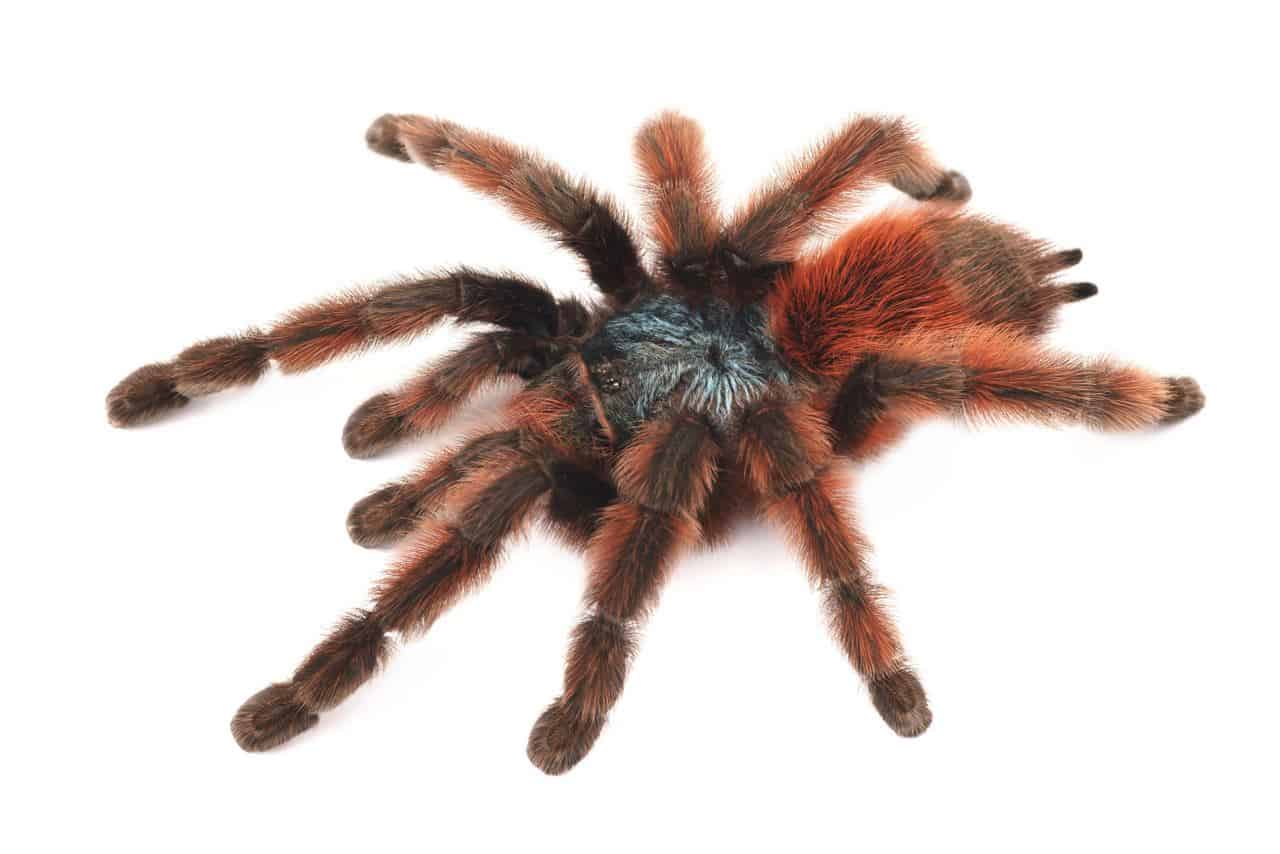
Also commonly referred to as the Martinique Red Tree Spider, the Antilles Pink Toe is our favorite tarantula species out there, and for multiple reasons too.
First and foremost, its color palette is insane, just look at how stunning it looks. Second of all, it is a very docile and calm pet to have even around children and beginner owners.
It is also a fairly large specimen, with its legs reaching a total length of 5 inches in total. Last but not least, the females tend to live up to be 10 years old, while males can live up to be 5 years old in total.
Conclusion
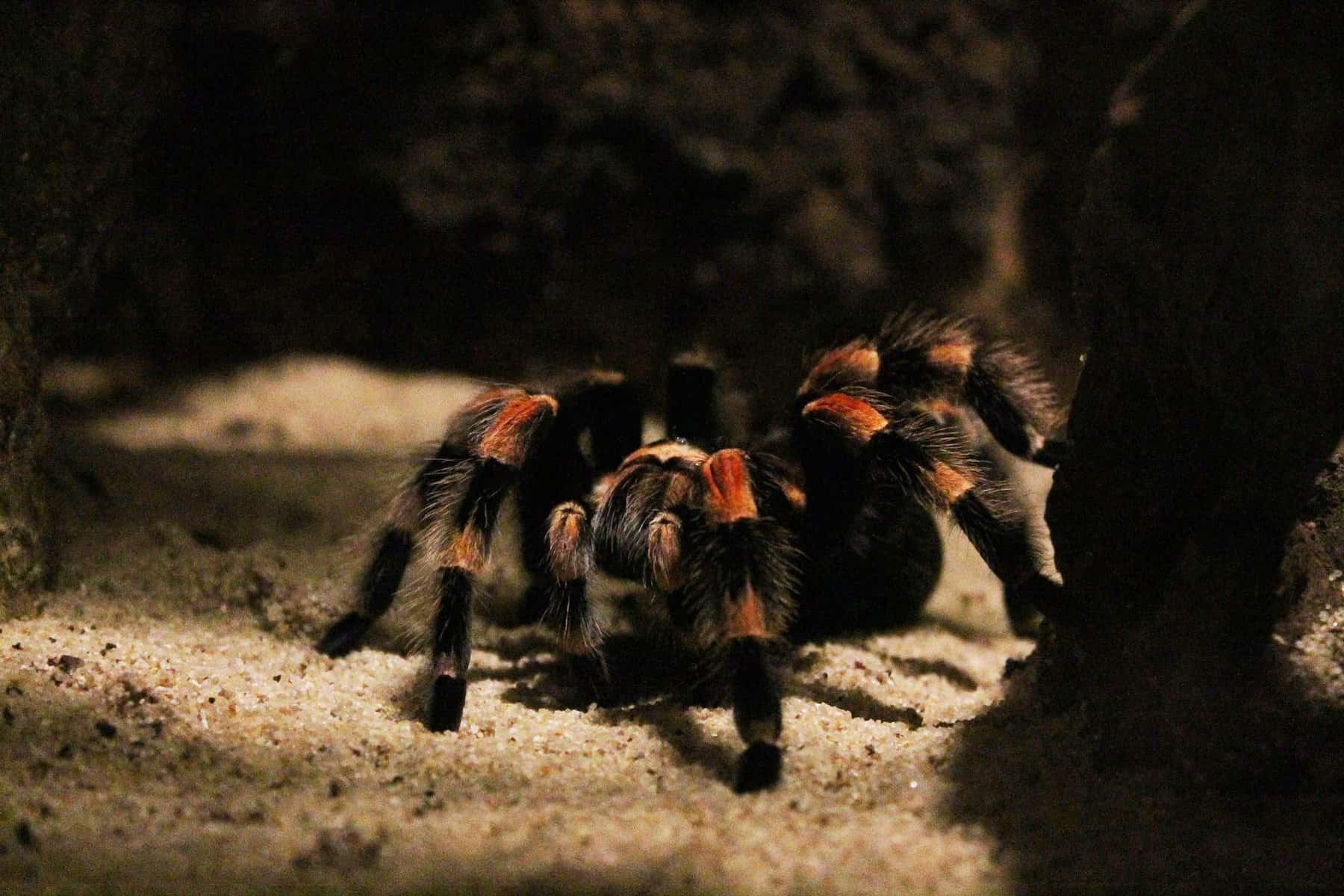
Many people believe that tarantulas are frightening and a little bit gross. While we can’t really discuss taste alone, we can safely say that there are more than a handful of beautiful species out there that we definitely believe could change anyone’s mind on that one.
With that being said though, tarantulas and spiders as a whole are not for everyone, which is for the better considering the fact that there are so many species out there that are on the verge of extinction.
But if you are still set on getting one as a pet, we urge you to purchase a tarantula that has been bred in captivity, just so you can ensure the survival of its wilderness counterparts.
Lastly, tarantulas tend to live as long as 20 years in total for some species, so always make sure that when you purchase a tarantula, you’re ready for the commitment you’re undertaking, because you will be stuck with one another for a very long time.
Contents
- 20. Socotra Island Blue Baboon
- 19. Martinique Red Tree Spider
- 18. Pink Zebra Beauty
- 17. Common Pink Toe
- 16. Brazilian Salmon Pink Bird-Eating Tarantula
- 15. Mexican Redleg Tarantula
- 14. Mexican Red Knee Tarantula
- 13. Western Desert Tarantula
- 12. Mysore Ornamental
- 11. Guatemalan Tiger Rump
- 10. Honduran Curly Hair Tarantula
- 9. Greenbottle Blue Tarantula
- 8. Desert Blonde Tarantula
- 7. Brazilian Black Tarantula
- 6. Costa Rican Zebra
- 5. Mexican Red Rump
- 4. Rose Hair Tarantula
- 3. Chaco Golden Knee
- 2. Curlyhair Tarantula
- 1. Antilles Pink Toe Tarantula

